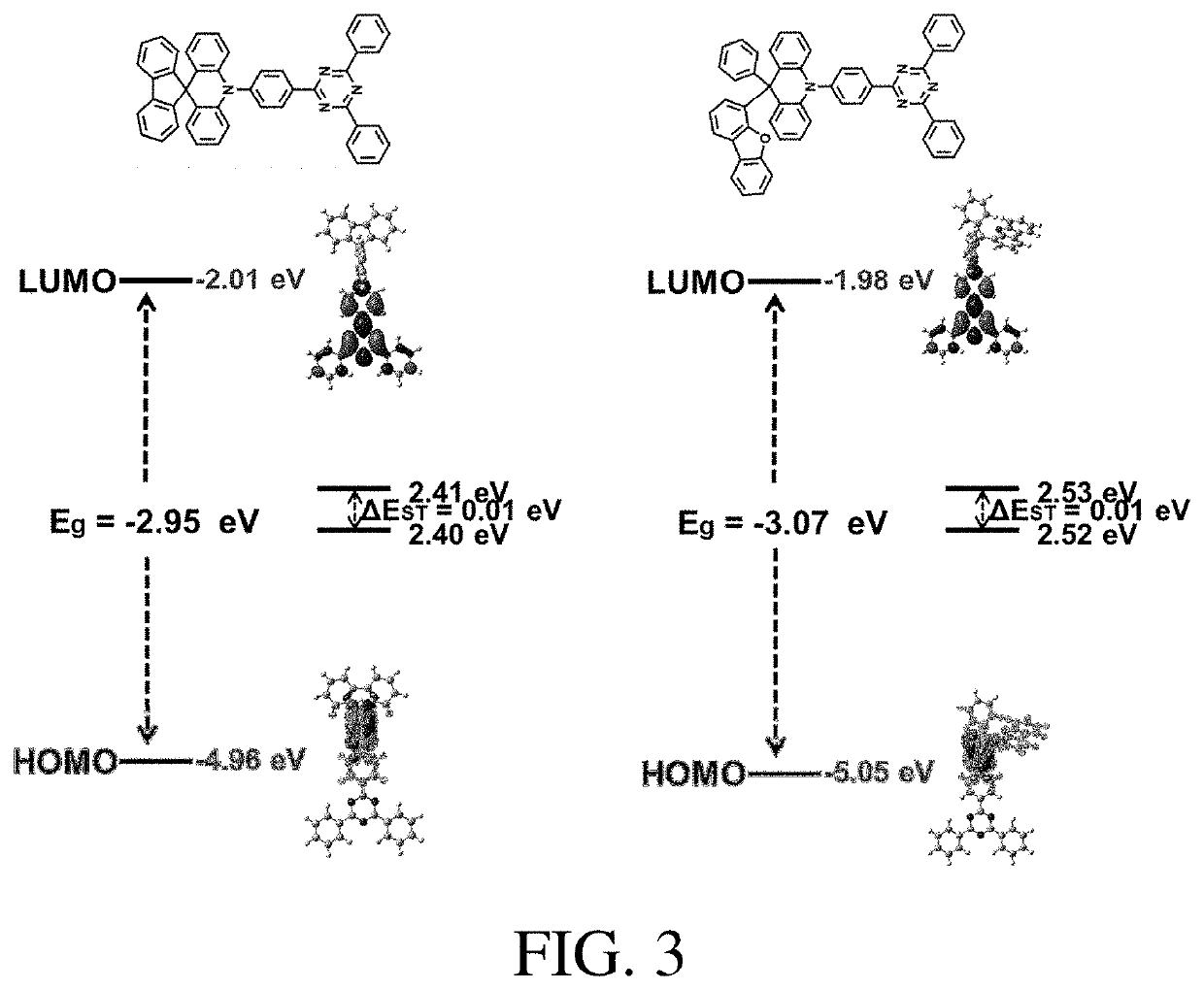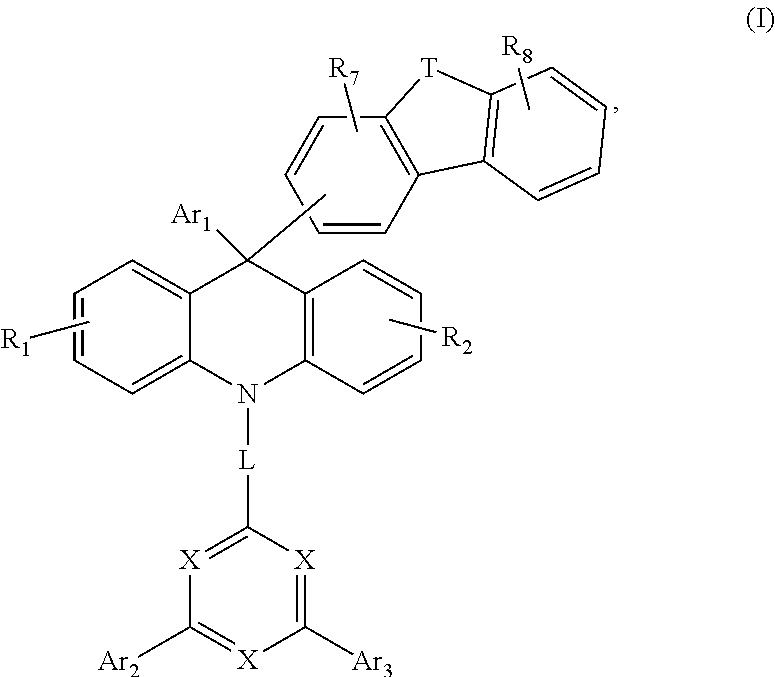9,10-dihydro-acridine derivative, and preparation method and use thereof
- Summary
- Abstract
- Description
- Claims
- Application Information
AI Technical Summary
Benefits of technology
Problems solved by technology
Method used
Image
Examples
example 1
[0053]This example provides a 9,10-dihydro-acridine derivative having a structure of Formula C-1:
[0054]The synthesis route for the 9,10-dihydro-acridine derivative of Formula C-1 is shown below:
[0055]The method for preparing the 9,10-dihydro-acridine derivative of Formula C-1 comprises specifically the following steps.
(1) Synthesis of Intermediate 1-1
[0056]Under nitrogen atmosphere, 9(10H)-acridone (the compound A-1) (19.5 g, 100 mmol) and tetrahydrofuran (700 mL) were added to a 1 L three-neck flask. A phenyl magnesium bromide (the compound B-1) solution (110 mL, 1 M) was added at −20° C., reacted at room temperature for 8 hrs, and then quenched by adding an aqueous ammonium chloride solution. The reaction solution was extracted with dichloromethane (3×), and then the solvent was removed by rotary evaporation. The residue was purified by column chromatography on silica gel, to obtain the Intermediate 1-1 as a solid (24 g, yield: 88%);
(2) Synthesis of Intermediate 2-1
[0057]Under nit...
example 2
[0060]This example provides a 9,10-dihydro-acridine derivative having a structure of Formula C-2:
[0061]The preparation steps of the 9,10-dihydro-acridine derivative of Formula C-2 were the same as those for the 9,10-dihydro-acridine derivative of Formula C-1 provided in Example 1, except that:
[0062]the compound E-1 in Step (3) of Example 1 was replaced by the compound of Formula E-2. The yield was 80%.
example 3
[0063]This example provides a 9,10-dihydro-acridine derivative having a structure of Formula C-3:
[0064]The preparation steps of the 9,10-dihydro-acridine derivative of Formula C-3 were the same as those for the 9,10-dihydro-acridine derivative of Formula C-1 provided in Example 1, except that:
[0065]the compound E-1 in Step (3) of Example 1 was replaced by the compound of Formula E-3. The yield was 78%.
PUM
 Login to View More
Login to View More Abstract
Description
Claims
Application Information
 Login to View More
Login to View More - R&D
- Intellectual Property
- Life Sciences
- Materials
- Tech Scout
- Unparalleled Data Quality
- Higher Quality Content
- 60% Fewer Hallucinations
Browse by: Latest US Patents, China's latest patents, Technical Efficacy Thesaurus, Application Domain, Technology Topic, Popular Technical Reports.
© 2025 PatSnap. All rights reserved.Legal|Privacy policy|Modern Slavery Act Transparency Statement|Sitemap|About US| Contact US: help@patsnap.com



